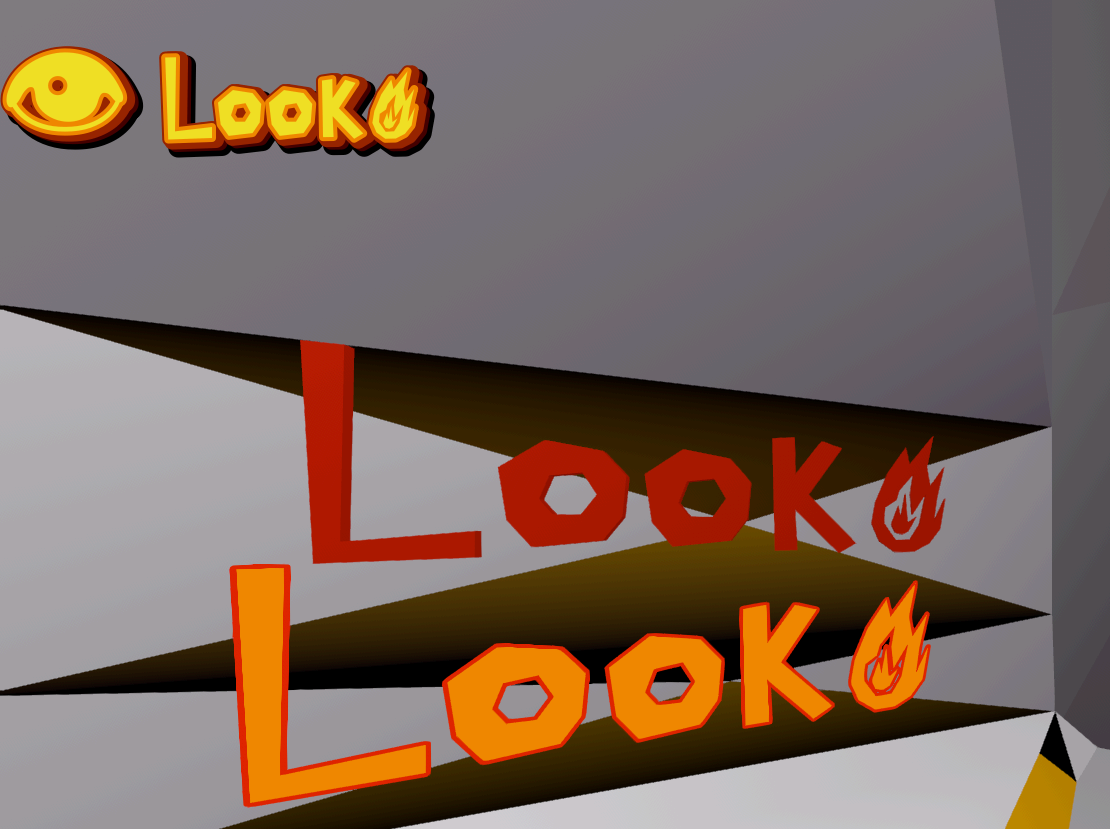
I’ve barely even been an acquaintance to an ecosystem(real or otherwise)!

I’ve barely even been an acquaintance to an ecosystem(real or otherwise)!

Honestly, even here doesn’t feel social most of the time. No global score on my instance, and lack of interaction isn’t a rare thing.
The less interaction is, the more it seems there are many different ways to do this probably for free. A static website ('90s era design, Neocities or webring?) or even plaintext-only? A one-person mailinglist, forum etc? Something more like a monthly newsletter or gratis 'zine page? A personal wiki thing?
And then, why does it need to be more than a note to yourself?
Also “I gotta pay a subscription for to use markdown for the void that I post into” how many people are this brand of absolute fool?


I wonder if this will apply to the original Steam Controller, or if lacking motion gestures is also a firmware issue.
It’s either that or using an old Sixaxis (PS3) controller.


I think for me**, the negatives probably outweigh the positives. Particularly as the CRT screen I’d actually get (for free) wouldn’t even be widescreen. Bulky small screen. Not a trinitron and I don’t think the connection and conversion would be great either.
CRT filters are interesting too, but seems like a high bar as well. The only one (of those that I could get to work) I think I really like is the triangular* filter in PCSX2 (with upscaling). Even then I can live without it… it improves FMVs and UI icons, downside being some distant/small objects are obscured, and font quality can go either way (marginally). Also a bit odd when games also use their own CRT shaders.
* Lottes actually (better color), but the 2 lottes shaders in Duckstation don’t look like that OotB
** admittedly not super into pixel stuff, I made an inconsistent resource pack for MC many years ago but I doubt CRT would do much with free 3D. I’m more interested in vertex colors, again aesthetically it might be interesting with trianglular filter but a lot less technical benefit.
EDIT: I should also say that 1:1 (2D) pixel art on a CRT would be different methodology, and thus maybe I’d like it better. With modern textured 3D, large flat areas of color (or even dither patterns) feels like a waste, so making everything detailed can really add to the work (particularly when you have tons of texture variants to make).
Also: “It’s one healthy snack Michael. What could it cost? Ten dollars?”


Realistically I’ll probably die in a heat wave.
Just for fun, if a like-minded individual has any possibility to physically preserve my brain (not a copy!) in their makeshift lab I’d probably roll the dice on that one if things were half-clean. Yeah, I know, the odds aren’t good.
In terms of cyborg stuff, I would want something more organic than popsci typically shows though. Like having a semi-synthetic body that is its own multi-cellular, symbiotic organism. That can further connect to other things (like to the myconet to exchange resources).
I would not want to live forever, though. If I did anything like that I’d probably live isolated for a while and then retire into my own brain.


I guess just the color tag on the character is enough, though will likely need to manually enter the color-code each time (I have my own palette, even worse if I even need to change* it). Also neat that the outline can be change this way too (not shadow?), though seems a bit messy to stack these in BBCode.
I’m guessing custom effects might be the thing that would allow me to make my own color map. Not sure if that would always apply or if I’d have to wrap any icon in custom BBCode for that to apply, and either way still not textmesh (or label3d).
Also for my complaint on the node itself, I guess it’s the same as a normal label with font scaling, just throws me off with the small default font size looking blurry in the editor (and existing fonts probably make more sense for smaller text, or even 2D text in general)
* shader globals don’t seem to work here (unless I’m missing something), though also my palette is ordered (7x5) so a vertical list isn’t great anyway. OTOH I did use 3-digit hex codes, so it’s not difficult to type in (remembering/interpreting, not so much)
What’s your game about? 👀
No game yet (and maybe never), currently have mainly messed around with models+vertex colors (Blender, not good with that either), not quite happy with the gridmap node.
With my world so far I guess it has sort of a low-poly dream-core aesthetic, but without a pixel filter (nor textures mostly). Tile floors, purple sky and glowing moon, random stuff everywhere, and it’s all on a floating island.


Things such as? I went searching and only found the drama, that they’re trying to make their own engine, and that somebody made a fork of Redot as well.
If they don’t like Godot (and if add-ons etc don’t help) a fork probably won’t address that. I’d sooner believe some web engine (less setup, perhaps easier systems) or framework (if they don’t mind lacking an editor, also easier to work with bindings) might be a better direction at least for starting out.
Some options might also make sense if they’re interested in a particular language, or even a particular type of game.
GDevelop (web+flowgraph) recently added 3D
Pygame (Python)
p5.js, Tic-80 (javascript)
Wick Editor (also JS, but also more of an animation thing / Flash-like)
WASM-5 (many bindings)
LibGDX (Java)
Luanti (LUA, block-based games)
Also there’s Gamefromscratch who has covered many options like this, including a per-language YT playlist.


It’s more obvious with the image (which should be loading now) but I’m talking about custom icons. Like having a fire icon be red/yellow while the rest of the text has its own color.
The richtextlabel does font+sizing etc differently*, I don’t like seeing pixels (can be dialed in, but not my favorite to require) though at least for the standard label the new stacked effects are a bit snazzy (and theme-like) so I guess I don’t hate it now that I do have it dialed in.
* which does not surprise me given the other text methods all have benefits and drawbacks (and even with the 2D label, color emoji can kinda look off with outlines but that might be down to the font?)


Anyone else have any progress to share?

Not sure if you’ll see the image, seems the host is having some issue now. Didn’t notice right away as it was cached for me.
I wish color font were easier (via FontForge, or instead using 1-command to bundle SVGs into an OTF file).
Then again, I also prefer textmesh which does not support color font either (even though the vertex color shader itself does, maybe someone better can/has figured out some sort of per-glyph color map).


That’s my secret captain…
I’m always not feeling so good.


After pushback, I switched over to ad nauseam (which still blocks via UBO). Not sure how effective it actually is for the click part (considering it also catches related things, some YT recommends, share buttons, definite non-ad things in search etc) but it says $1.8K (I have it set between ‘sometimes’ and ‘always’).

Color fonts also seem like such a pain to create. At least what I’ve seen (for non-paid stuff), people are saying to start in Font Forge, use a Python tool (fonttools*) to convert to SVG, add color (either manually with Inkscape, or inject color with the same tool), then use the tool to merge the SVGs back into your font. * the version I have (mangohud dependency) either doesn’t have those commands or I need to do more
I can maybe understand that if it gives you both single-color and multi-color glyphs (assuming de-color isn’t actually a thing), though it would be nice if I could just use 1 command to bundle a folder of SVGs into an OTF file. Though that’s for my usage in Godot, where multiple fonts and a fallback option makes a dedicated symbol font make more sense.
I prefer working with Textmesh, though that doesn’t handle color (from fonts) at all. A vertex color shader could display it, even a per-glyph color map would be something (but I have no idea how to do so without re-implementing textmesh from scratch).



Relevant: THOSE DAMN ALIEN BASTARDS ARE REAL. by Gianni Matragrano.


Honestly, with a fresh-water rinse I could easily see that being beneficial.
Consider:
Maybe even the type of thing that could run off of solar or backup power for a planned shower.
Though yeah, I guess a bath (with a quick shower after) probably is a whole lot cheaper and easier to (plumb rather than) engineer. Plastic tubs have their own grossness, though.
I also imagine this fitting more as some sci-fi thing, not sure how well it’d be easy to manage water in space, though. My first thought would be people annoyed with having to vacuum up droplets, get blasted with air, or being stuck in a drying room as a safety procedure. And some sci-fi vat bath might still make more sense.


<Drowning Pool playing in the background>
Take your money out the bank…
Take your money out the bank…
Take your money out the bank…
Take your money out the… BAAAAAAAAAANK!


I’m going to go with the multiple causes for slowness (and that’s interpreted languages in general). In some cases, things might be usable if I weren’t on Zen+ still (newer stuff has better IPC among other things).
Things like JIT or no-GIL might reduce that, but I’m not sure that it’s that easy to fix (not being default (plus multiple options) seems to complicate bindings even).


It’s like saying it’s V E R Y _ W A R M but really it’s just low-poly without textures.

Although it’s as much of a technical thing for me. I want the low-storage-data, rendered in native-res, old (and smart) technique even if everybody else moved on. Also, less to do.
You mention Raylib in another comment. I can definitely see that for anyone who wants a tilemap/pixel project or small-scope 3D… but even then it’s likely to involve making boilerplate stuff, unless you can lean on libraries (which makes more sense if you know exactly what you’re trying to make).
I’ve really only tinkered with Godot TBH, but lots of things are easy to do in the editor that would be something manual in Raylib. Considering both have bindings capability, Godot makes a lot of sense for the systems it has.
Even with my difficulty I’m not sure what’s “complex” about Godot, I would agree some systems need more work (nobody stepping up, some requests rejected for being ‘too niche’) but that is something else entirely. Is the “complex” part that you want a framework rather than an engine?
Also “competing” is odd when one is free (and easy to run) while the other is trying to screw over its users. I would say it competes as much as it needs to. Any sane game developer probably isn’t attempting to make a questionably-large-scope game. Especially if they can’t even run the questionably-big engine on their hardware.